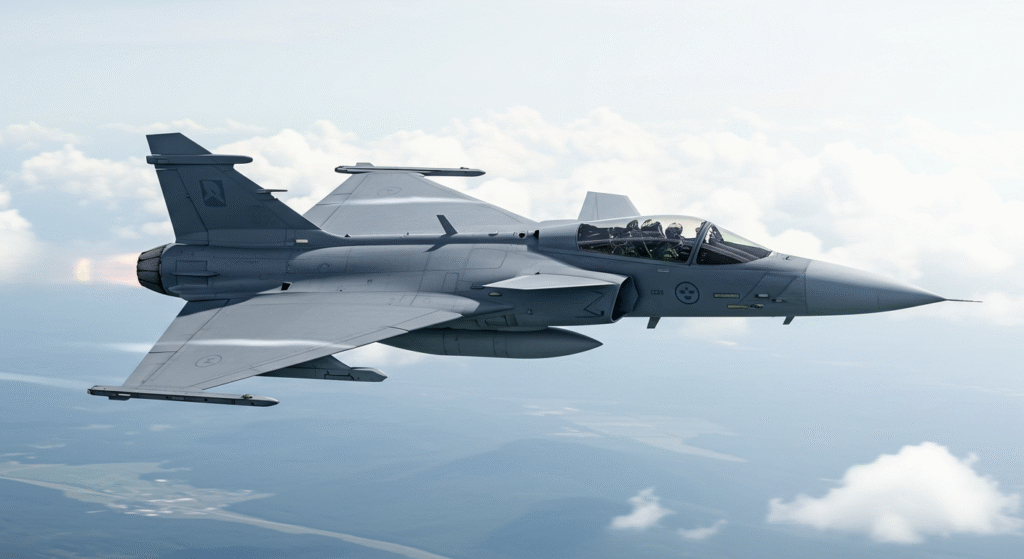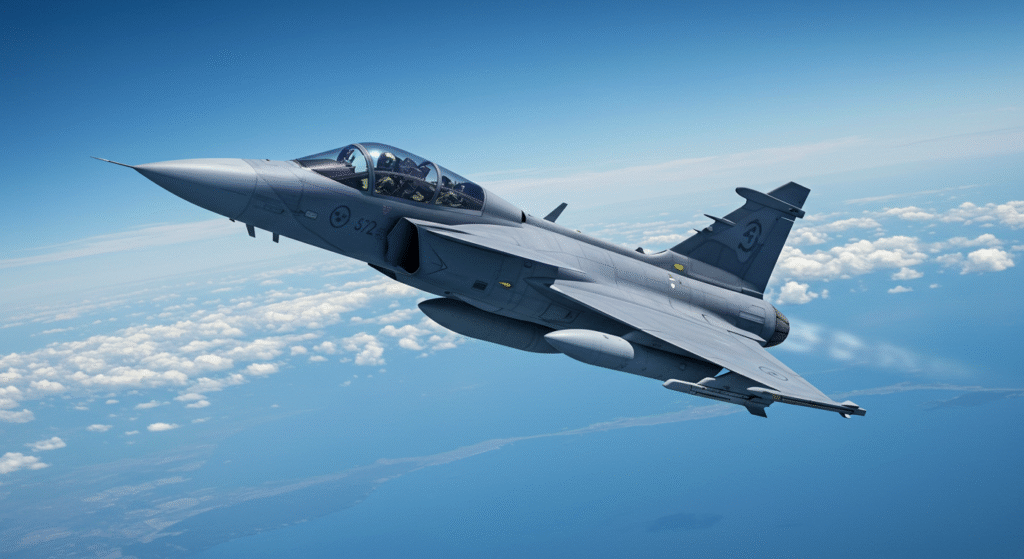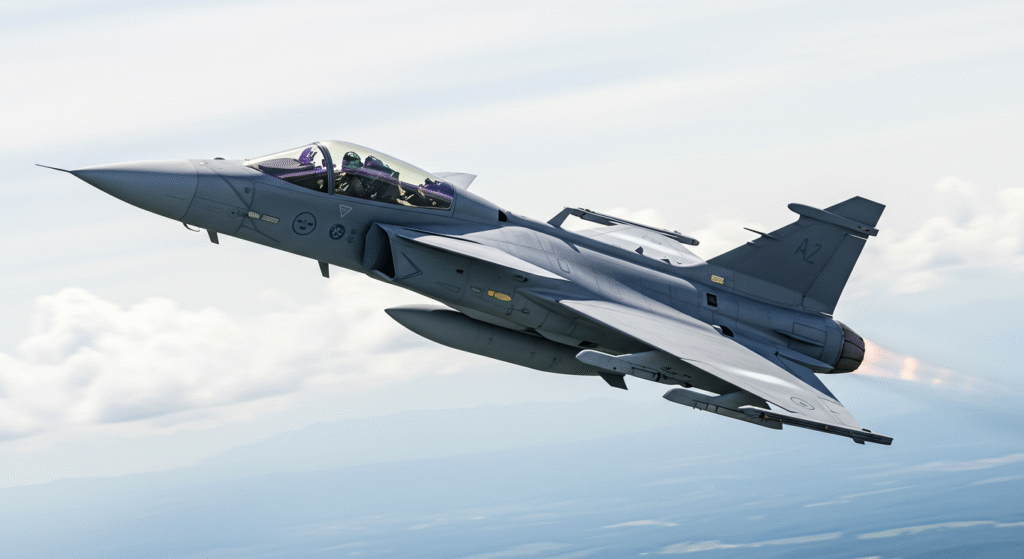Discover the Saab Gripen A/B (JAS 39A/B) and explore its groundbreaking features, history, and impact on modern aviation. Unpack the legend today!
Introduction
In the annals of aviation, certain aircraft don’t just fly; they redefine. Among these, the Saab Gripen stands as a testament to ingenuity, cost-effectiveness, and strategic thinking. But before the cutting-edge Gripen E/F of today, there was the foundational workhorse: the Gripen A/B. This initial series, specifically the single-seat JAS 39A and its two-seat trainer counterpart, the JAS 39B, laid the groundwork for a fighter jet that would capture the attention of air forces worldwide.
A Nation’s Strategic Vision
To understand the Gripen A/B, one must first appreciate the unique defense philosophy of Sweden. As a neutral nation during much of the Cold War, Sweden couldn’t rely on alliances for its security. Instead, it pursued a doctrine of total defense, emphasizing self-sufficiency and the ability to rapidly mobilize and defend its airspace from dispersed locations, including ordinary roads. This demanded an aircraft that was not only highly capable but also robust, easy to maintain, and quick to turn around.

The existing fleet of Saab 35 Draken and Saab 37 Viggen, while formidable in their time, were becoming technologically dated and increasingly complex to operate in this evolving threat landscape. The Swedish Air Force identified a need for a new multirole fighter that could handle “Jakt” (air-to-air combat), “Attack” (ground attack), and “Spaning” (reconnaissance) – hence the “JAS” designation. This comprehensive requirement, combined with the stringent demands for cost-efficiency and adaptability, birthed the Gripen project in the late 1970s.
Design Principles: Form Follows Function
The Gripen A/B’s design was revolutionary for its time, embodying a delicate balance of performance and practicality.

The Canard-Delta Configuration
At the heart of its exceptional maneuverability was the canard-delta wing configuration. Unlike traditional aircraft with horizontal stabilizers at the tail, the Gripen featured small, movable canard wings positioned forward of the main delta wing. This design offered several advantages:
- Enhanced Agility: The canards, working in conjunction with the main wing and thrust vectoring (though not fully exploited until later variants), provided superior pitch control and high angle-of-attack capabilities, making the Gripen incredibly agile in a dogfight.
- STOL Performance: Crucially for Sweden’s dispersed operations doctrine, the canard-delta design contributed significantly to Short Take-Off and Landing (STOL) performance. This meant the Gripen could operate from shorter, improvised runways, reducing its vulnerability to concentrated attacks on large airbases.
Relaxed Stability and Fly-by-Wire

The Gripen A/B was designed with “relaxed stability,” meaning it was inherently unstable in flight. While this might sound counterintuitive, it’s a key feature of modern, agile fighters. This instability is managed by a sophisticated, triple-redundant digital fly-by-wire (FBW) flight control system. The FBW system constantly makes minute adjustments, translating pilot inputs into precise control surface movements, effectively making the aircraft highly responsive yet stable for the pilot. This technological leap allowed for an aircraft that was both incredibly nimble and forgiving to fly.
Powering the A/B: The Volvo Aero RM12
The heart of the Gripen A/B was the Volvo Aero RM12 engine, a derivative of the General Electric F404 engine. While perhaps not the most powerful engine compared to its contemporaries, the RM12 was chosen for its reliability, maintainability, and optimal performance within the Gripen’s design parameters. It provided the necessary thrust for supersonic flight and sustained combat maneuvers, all while adhering to the Swedish mandate for cost-effectiveness.

The Cockpit: A Pilot’s Domain
The cockpit of the Gripen A/B was a significant departure from previous Swedish fighters, embracing the “glass cockpit” philosophy.
Multi-Function Displays (MFDs)
Instead of a myriad of analog gauges, the A/B featured three large, color multi-function displays (MFDs). These MFDs could be configured to show flight information, radar data, tactical situation, weapon status, and engine parameters, reducing pilot workload and enhancing situational awareness.
Hands-On Throttle And Stick (HOTAS)
The aircraft also incorporated a Hands-On Throttle And Stick (HOTAS) system. This ergonomic design allowed pilots to control critical functions, such as radar modes, weapon selection, and countermeasures, without having to remove their hands from the throttle or control stick. This seemingly small detail significantly improved response times in high-stress combat situations.
Operational Debut and Legacy
The Gripen A/B made its maiden flight in 1988, entering service with the Swedish Air Force in 1996. While its operational life was largely confined to Sweden, serving as the backbone of its air defense, it proved the foundational concepts of the Gripen program. It demonstrated the viability of a lightweight, multirole fighter capable of operating efficiently and effectively in a highly demanding national defense scenario.
The Gripen A/B series was eventually replaced by the more advanced Gripen C/D and later the Gripen E/F. However, its importance cannot be overstated. It was the crucial first step, the proof of concept that paved the way for the Gripen’s international success and its evolution into one of the most respected fighter jets in the world. It showed that a nation, by carefully defining its needs and leveraging innovative design, could develop a world-class defense capability that punches well above its weight. The Gripen A/B wasn’t just an aircraft; it was the embodiment of a strategic vision brought to life.

